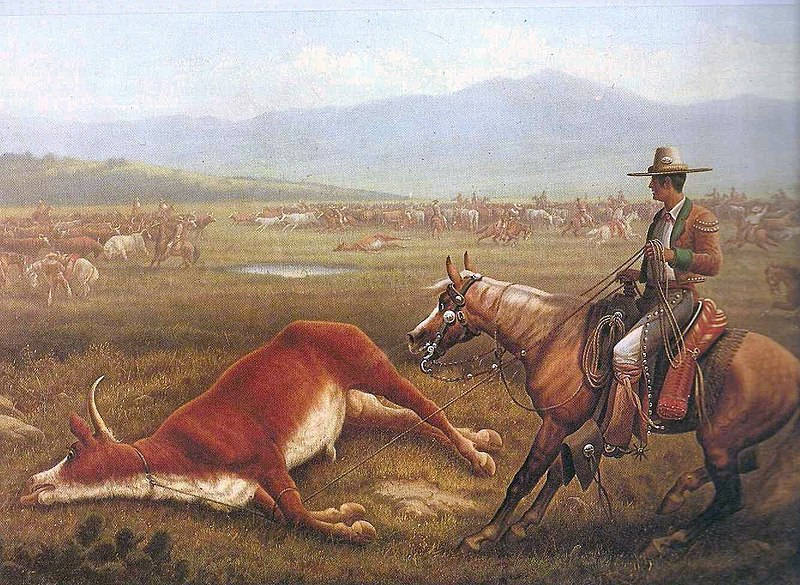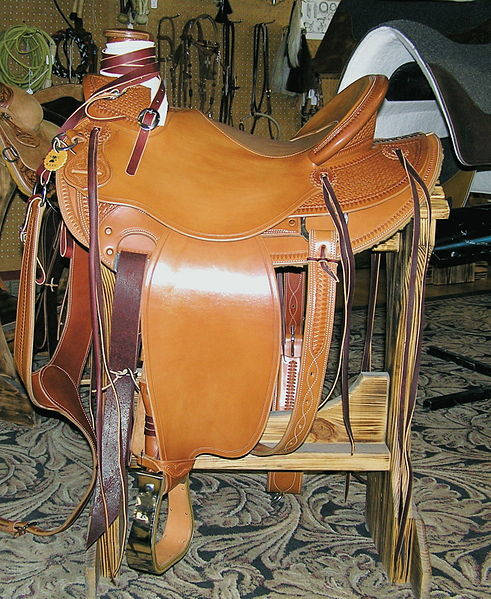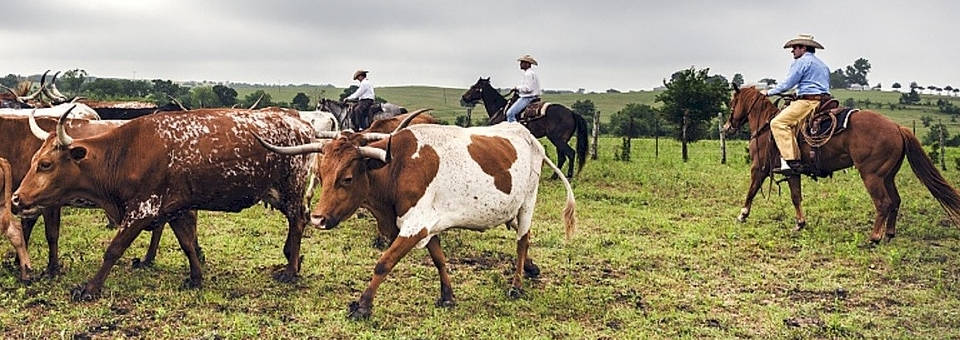Cowboy History: Were the Vaqueros America’s First Cowboys?
The cowboy is the iconic representation of America, an enduring symbol of the nation’s frontier and Westward expansion days. While it had been portrayed and often distorted in the movies and modern culture, cowboy history will always be an indelible part of America’s early days.
However, one of the most fundamental aspects of Wild West history seems to have been deliberately torn from the pages.
The Spanish Influence in Cowboy History
The American cowboys’ tradition, skills, and method of managing cattle have been largely influenced by the Mexican vaquero. Due to this, most cowboys in the United States today have derived what they know from the vaquero.
Sadly, however, the vaquero’s role had not been taken into account and, more often, misrepresented. English writers are mostly guilty of this deliberate downplay of the vaquero’s part and their deletion from cowboy history. It is the Western cowboy’s colorful reputation that flourished in American culture while that of the vaquero’s have all but vanished.
The Spanish term vaquero may sound like a segregated social class, but it is actually interchangeable with caballero (literally, gentleman) which is a badge of distinction. It is one of the highest stations a Mexican horsemen would wish to attain in life.

Mexican vaquero circa 1830
Vaquero is a rendition of the Spanish words for cow (vaca) and man. Many Mexicans were proud to hold this title and would do almost anything to be on the saddle. A curious case in point is that the American term cowboys is a downgraded version of the Spanish cowmen.
Early Beginnings of the Vaqueros
Hundreds of years before the first cows and cowboys ever set foot in the American West, men in horseback were already rounding up cattle in Spanish Mexico. In the early 1500’s, explorers and settlers from Spain introduced ranching to this newly-colonized continent. They also brought in the Spanish mission system where indigenous people were gradually assimilated into the Spanish colonial empire’s culture and religion.
As part of their mission system, wealthy Spanish rancheros hired the services of cowboys – or vaqueros – to look after and drive their cattle from Mexico to what is now Texas and New Mexico. The rugged and hard-working Spanish-conscripted vaqueros soon became masters in the art of herding livestock. They became magnificent horsemen who also excelled in cattle roping.
The Age of the Vaqueros
The cattle business boomed during the Westward expansion in the States. With the emergence of new job opportunities, many vaqueros rode into America from Mexico.
The first cowboys were Spanish-born Americans and were originally called criollos. There were also cowboys known as mestizos who were a mix of Spanish and Native American settlers. These earliest American cowboys made their way past the Rio Grande to avail of land grants in the then kingdom of New Mexico as well as many of the western states.

A “Wade” saddle derived from vaquero saddle designs Image Credit
When Texas gained in its independence from Mexico in 1836, it had a large population of American settlers already living there since the early years of the Westward expansion. These settlers hired the Mexican vaqueros and adopted their style of tending livestock. Over the years, the inexperienced settlers learned how to round up cattle, tame an unbroken bronco, and lasso a steer.
The American ranchers even “borrowed” some of the vaquero culture including their characteristic riding style, attire, lingo, and saddle design. Buckaroo, dally, and lasso are just some of the words derived from vaquero jargon.
All through the 1800’s, the vaquero influence dominated the livestock business. Cowboys originated from a mixed social heritage that included Native Americans, migrants from Europe, African Americans, and settlers from the South and the Midwest.
By the turn of the century, a third of the cowboys in the south is Mexican vaquero.
Where Have All the Vaqueros Gone?
Many centuries have gone by since the first vaqueros drove their cattle to Texas and New Mexico. Just like cattle-driving, many believe that the vaquero culture is dying, if not totally dead.
Cowboy history die-hards all say that cowboys will never ride off to the sunset as long as there are cattle to tend. They maintain that the most effective way to round up cattle is riding on a horse.
As for the vaqueros, think of them as the traditional cowboy boots. Their styles and designs may change from time to time, but the high shaft, pointed toe, Cuban heel, and no lace trademark will always remain. The same holds very true with the vaqueros.


In Mexico a vaquero was not prestigious at all but a low class ( yet very prideful) mestizo. Charros ( mostly criollos) who evolved from the Spanish caballero were seen as high class and were one of the few people who were allowed to carry weapons during Spanish Mexico. The charro inherited a lot of the horsemanship that the Spanish brought from Spain but also developed a new style of ridding and handling cattle. One example was the use of the lasso which replace the Spanish Garrocha and later the Spanish war saddle evolved into the working saddle with a horn we have today ( it provided better use of the lasso). The charros were very talented with the lasso and very skilled with the horse, a Vaqueros and chinaco would aspire to have the social class and heroic like prestige that a charro had. Vaqueros were mostly mestizos as Native Americans were very rarely permitted to ride horses. The hacendados( owner of the haciendas) hired low classes vaqueros who were watched and thought by the charros to work the cattle. Overtime with the promise of free land up north, many of these poor vaqueros moved north further into the states of Chihuahua, Sonora and New Mexico giving way to the vaquero/ cowboys of northern Mexico and the south west we know of today. Furthermore, a lot of these Vaqueros Who stood out and we’re very talented were in listed to serve and fight in the military( along side with the charro who were mostly generals). Due to their bravery in defending their country against Spain, these vaqueros earned more prestige and became known as chinacos. Chinacos were very similar to the charro but wore a brim hat similar to the “ sombrero cordobés “ with silver buttons and a horse saddle that was almost identical to the charro saddle “ silla charra” that was also covers in silver. The chinaco usually used a longer lasso that they used as a weapon for war as well as for work. Once the war of independence was won they were granted larger parts of land in California where they also fought bravely against the Americas, usually charging into rows of soldiers with a spear in defense of their land and country. These kind of cowboys were also known as Murciélago “bats” because they would hide in caves until the night fell and attacked incoming troops (the movie zorro was inspired by them).In Baja there is also another type of cowboy Called a cuerudo ( original californios) that due to their isolation develop differently from the Cowboys of the mainland.
Thank you so much for your detailed and thoughtful information about the Vaqueros and the Charros.
The first Vaqueros or Cattle herders in Mexico in the 1500s were Black slaves and Indians. The first laws regulating the Rodeos in 1551 ordered Black men or Indians to do the job of rounding up and enclosing the wild cattle; failure to do so would result in physical punishment.
The first True free Vaqueros began to appear in Nueva Galicia (present day Jalisco, Colima, Nayarit, Zacatecas and Sinaloa) in the late 1500 to early 1600s. The first written mention of such men was in April 1st, 1603 by Gaspar De la Fuente in Guadalajara. In his report about the conditions of the province, he complains about the growth in the number of Mestizos and Mulattoes in the area. He says that they call themselves Vaqueros and go from village to village working as such and committing crimes; and that no one dares to confront them. Those men did not go by any specific name, but they were usually called “Los hombres de a caballo” or the “Men on Horseback.” They wore clothes made out of thick cow hide that served as armor; and they were armed with a Desjarretadera, an arquebus, and a scythe.
The Desjarretadera was the original Mexican cowboy tool, similar to the European and Asian garrocha or pole, but it had a sharp half moon shaped blade. The vaquero would go out in the forest and hunt down bulls by slicing the hamstring of the animal. Once the animal went down, the vaquero would dismount and finish hi off by stabbing him on the base of its head. Once dead, the vaquero would skin it and remove the tallow and leave the rest to rot.
About the name vaquero and charro, the actual name give to these men in the 18th century was “Ranchero.” Ranchero is the correct name; they received this name because they lived in the Rancho or Ranch. In the hacienda system the rancho was a unit of land that composed a Hacienda or Estate. Charro which means gaudy was actually just the a nickname the Rancheros received because of their gaudy clothes full of silver and gold ornaments that in the eyes of the upper class looked ridiculous.
Vaquero, like Caporal, Caballerango and Mayordomo were only jobs or job positions or titles within the Hacienda. The Vaquero took care of the cattle; the Caporal was the boss of the Vaqueros; the Caballerango took care of the horses while the Mayordomo was the boss of all of them. As any other job you could be promoted. Some vaqueros could be promoted to Caporal. Thus all caporales began working as vaqueros until they were promoted.
So Charro and Ranchero are the same and are the correct names to describe the horsemen that worked in the countryside; while Vaquero was just a job or job name, one of the many jobs a Charro could do in a hacienda. All Vaqueros are Charros, but not all Charros are Vaqueros.
Why are the early Florida vaqueros always ignored in these histories?
Beats me? The word cowboy immediately conjures up images of the arid, sunlit plains of the midwest, the dry heat of Texas and Arizona, big-brimmed hats and dusty mid-calf boots. But long before these Western heroes graced the horizon with their silhouettes, another brand of cowboy was mucking it up in the swamps. The original cowboy. The Florida cowboy.